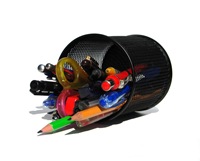Using Quotations, Hyphens, Dashes and Brackets
This page explains using quotations (" "), one of the most commonly used marks in English punctuation, along with the hyphen (-), dash (—) and brackets (()). Let’s begin.
Quotations:
Quotations are also known as “inverted commas” or simply “quotes”. These marks can have two types: Single quotation marks or Double quotation marks. These can be used interchangeably. Sometimes, both are used in one sentence.
Using quotations can be helpful when mentioning proper nouns like book names, movie names, place names etc, and while talking more about them. They are also used when citing some text from a different source, when emphasizing something specially and finally when writing direct speech or dialogue.
Let’s see the examples.
Example 1: Currently, I am reading “Theories in Marketing”.
Interpretation 1: The name of the book or book’s title is placed in double quotes. You may use single quotes too. Also, you may italicize the quoted text as well and omit the quotes.
This way: Theories in Marketing.
Example 2: Today I will be watching the series ‘Lost’.
Interpretation 2: The name of the television series is mentioned in single quotes. You may use double quotes too. Also, you may italicize the quoted text as well and omit the quotes.
This way: Lost.

Note: When doing hand-written copy, you can underline instead of using quotations.
Example 3: Tina asked the stranger: “Are you following us?”
Interpretation 3: The words that Tina said are placed inside the quotes.
Example 4: The “hero” of the night was here.
Interpretation 4: The word to be emphasized is placed in quotation marks.
Example 5: David said: “I thought you wanted to watch ‘Lost’ tonight”.
Interpretation 5: Here, we need two sets of quotations, and so use both the types. You may exchange the order if you would like.
Note: Generally when using quotations in American English writing, keep the period inside the quotation marks and keep the exclamation and question marks outside the quotation marks.
The Hyphen:
The hyphen is a small horizontal line; it is smaller than a dash (—). While using hyphens, do not put a space before or after the mark. A hyphen has many uses, but there are no strict rules observed.
Hyphens are used to join independent words to suggest a connection between them, with prefixes, with similar sets of compounds and to place modifiers before a noun. Let’s try some examples.
Example 6: shoe-string
Interpretation 6: “The string of the shoe” is the expanded form.
Example 7: all-pervasive
Interpretation 7: All-, self-, ex-, non- are some examples of prefixes that use hyphens.
Example 8: thirty-six
Interpretation 8: To join compound numbers written in words.
Example 9: The 6-, 7- and 8-year old boys were participating first.
Interpretation 9: When there are several sets of different elements’ unions (compounds), you can shorten them with a hyphen and writing the common part of the union just once. Here, that part is “year”.
Hyphens are also used to join broken words at the end of a printed sentence in books too.
The Dash:
The Dash is a little longer in horizontal length than the hyphen and is used more commonly in hand-written and printed copies. When working on a computer, a hyphen is more handy and available.
A dash is used to introduce a break, an after-thought or missing words in between.
Example 10: Places I’ve traveled—Australia, India and Singapore.
Interpretation 10: A list is introduced. You may use a comma as well.
Example11: I will take care — — the garden.
Interpretation 11: Used for a fill-in-the-blanks kind of questions. Each letter has a dash for it.
Example 12: I had finished weeding completely last noon—it looked to me like I did!
Interpretation 12: To append an after-thought.
Brackets:
The usual form used in English writing is the round bracket, also called the “parenthesis”.
Brackets are used to give additional information to the text and for aside comments.
Example13: The apples were fresh (and red) when bought.
Interpretation 13: Additional information about the color adds to the freshness of apples.
Square brackets shown as [ ] are used for adding Editorial information and are not common in English writing otherwise.
Return From Using Quotations, Hyphens, Dashes and Brackets To Correct Punctuation Overview
Return To Home Page From Using Quotations, etc.






